March 2017
For many dinosaur lovers, a passion for dinosaurs extends beyond special edition Blu-Rays of Jurassic Park, or midnight screenings of Jurassic World. For those who love all things prehistoric, dinosaur-themed roadside attractions become necessary stops, while stratified mountain ranges become treasure troves of possible exciting finds. It’s for these types of people that we’ve found the 30 most impressive fossil sites in North America.
The sites on this list vary dramatically. Some are big national parks, where digs and fossil discovery are just a fraction of everything offered. Others are full-blown fossil sites, complete with museums, complete skeletons, and even some digging opportunities for amateurs. Despite their many differences, these 30 sites do have one thing in common: they provide stunning and impressive glimpses into a fascinating prehistoric past.
Agate Fossil Beds National Monument
Harrison, Nebraska
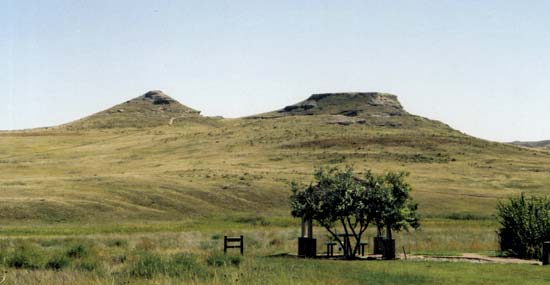
Once you consider the fact that 20 million years ago this region was a grassy, Serengeti-like plain, perhaps it becomes not so surprising that the Agate Fossil Beds have easily become one of the most impressive fossil sites in North America. Most of the fossils have been visible in the Agate’s cliffs, the result of the fact the animals died before the rock weathered and the terrain shifted. Especially notable discoveries have included: Amphicyon (also known as a “beardog,” and resembles neither a bear nor a dog), the pig-like Dinohyus, a short rhinoceros called a Menoceras, a Miohippus (prehistoric ancestor of the horse), the camel-like gazelle Stenomylus, Palaeocastor (land beavers), and an especially impressive 8-foot tall animal with the head of a horse, but the feet of a sloth. To see many of the region’s coolest finds, visitors should wander the 2.7-mile long Fossil Hills Trail.
Ashfall Fossil Beds State Historical Park
Royal, Nebraska
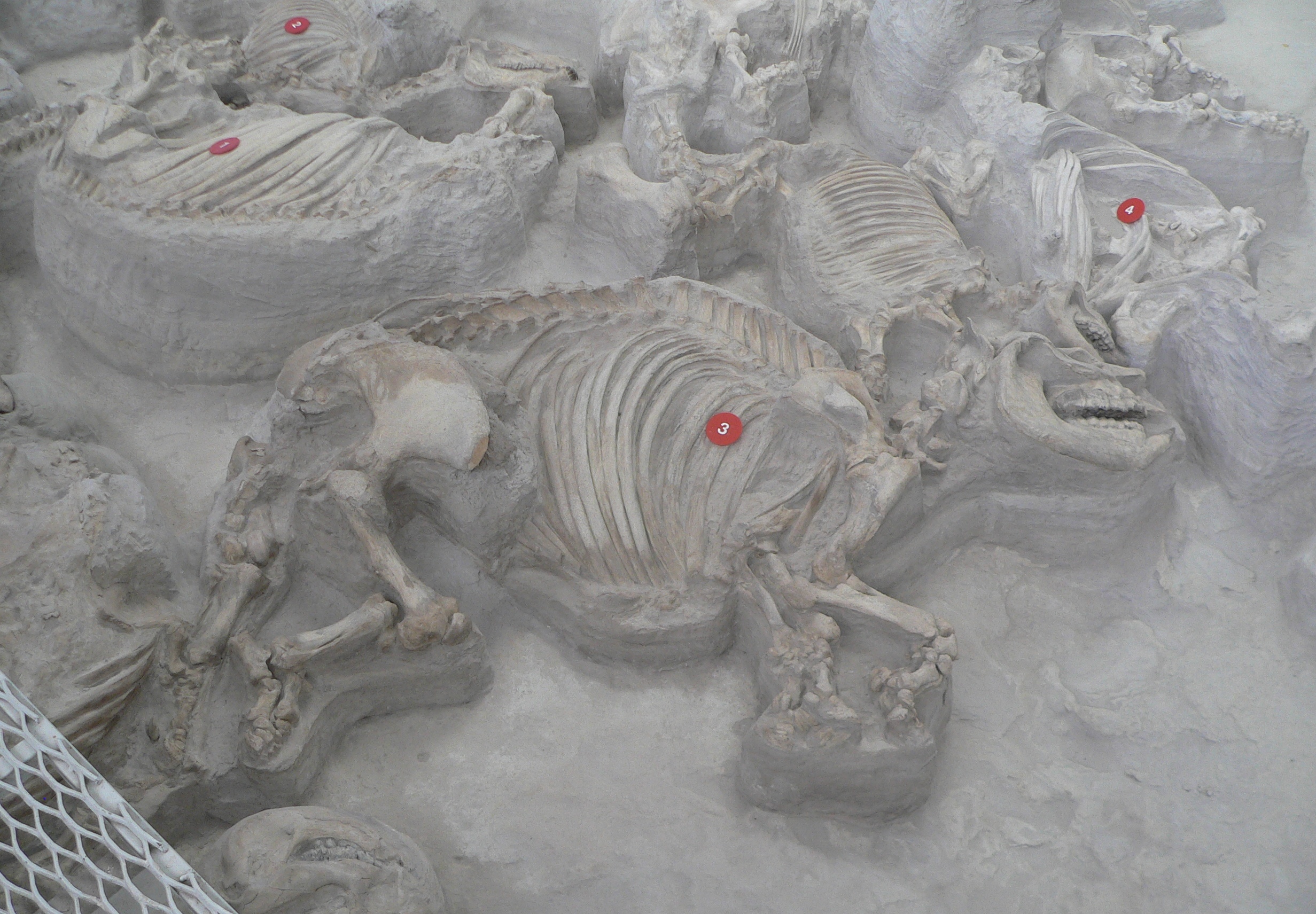
Twelve million years ago, a volcanic eruption covered hundreds of square miles with ash thick enough to suffocate most of what was living here. Today, this area is the aptly named Ashfall Fossil Beds State Historical Park. Hundreds of remarkably preserved skeletons have been found here, including prehistoric camels, tortoises, horses, and even rhinos. A variety of nature trails are available to see the fossils, and visitors intent on seeing them all can camp at the comfortable Grove Lake campsite.
Badlands National Park
Imlay Township, South Dakota
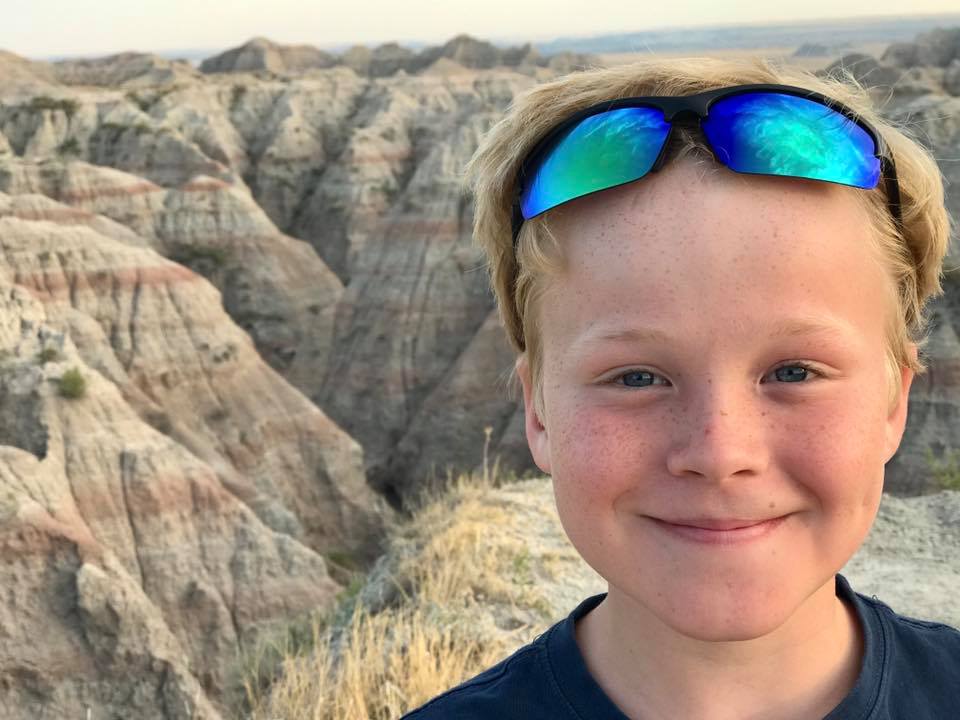
South Dakota’s massive Badlands National Park contains some of the biggest fossil concentrations on the planet. For instance, the layers of red and yellow that make the Badlands so recognizable are actually fossilized soils in which tons of interesting things have been found over the years. To really get a feel for the area, visitors should take the Castle Trail, which after five miles joins the fascinating Fossil Exhibit Trail.
Burgess Shale
British Columbia, Canada
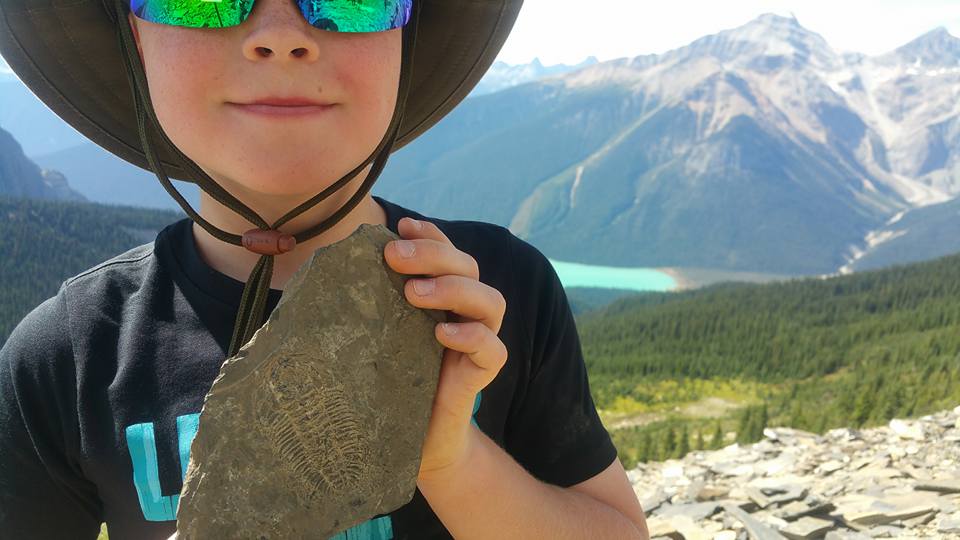
The Burgess Shale, a large black-shale deposit in the Canadian Rockies, has been called the “most significant” fossil-related site in history. This mighty reputation is surely due to the exceptional preservation of the softest parts of the fossils. The fossil beds date back approximately 508 million years, to the Middle Cambrian period, and significant finds have included Priapulida (predatory marine worms), various ancient mollusks, and more than 53 species of Arthropods, to name but a few.
Cleveland-Lloyd Dinosaur Quarry
Elmo, Utah
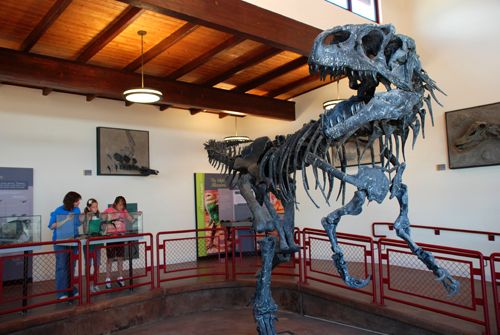
There are seemingly dozens of fossil sites in Utah, but the Cleveland-Lloyd Dinosaur Quarry is definitely one of the most impressive. The site, which is run by the U.S. Bureau of Land Management, boasts the largest collection of Jurassic Era bones ever found. The Quarry has proven an especially impressive fossil site for the skeletons of Allosaurus, a big flesh-eating dinosaur with a large skull and massive teeth. The Quarry also includes a museum and very well done ranger-led hikes.
Como Bluff
Montana and Wyoming
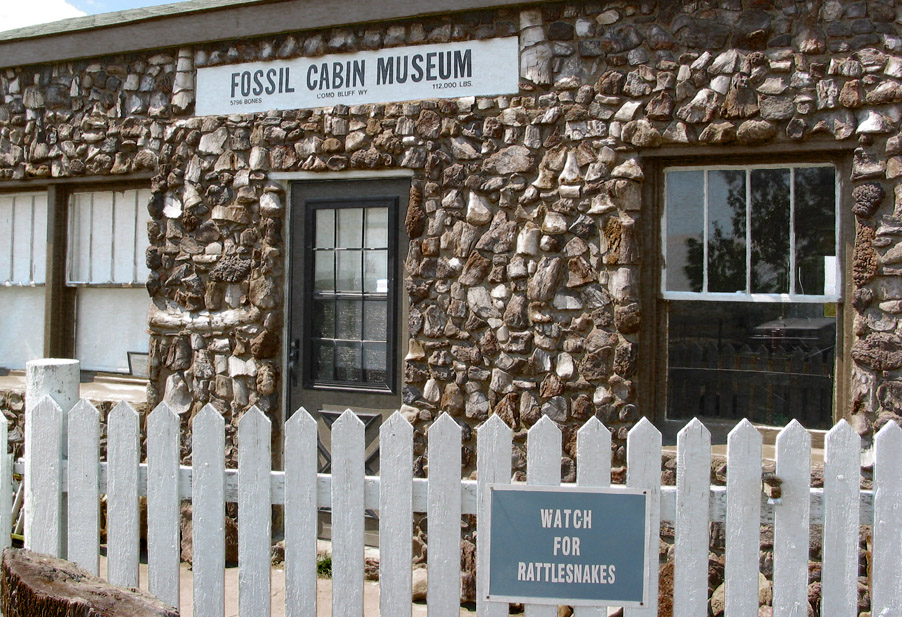
Spanning parts of both Montana and Wyoming, Como Bluff consists of three geological formations: Sundance, the Morrison, and the Cloverly, all of which contain thousands of fossil remains from the Lake Jurassic and Mesozoic Eras. The first fossils were discovered here in the 1800s, and since then, Como Bluffs has been considered one of the best sites for dinosaur discovery. Notable findings have included the only known specimen of Coelurus, various mammals, fish, turtles, and crocodilians.
Dinosaur National Monument
Jensen, Utah
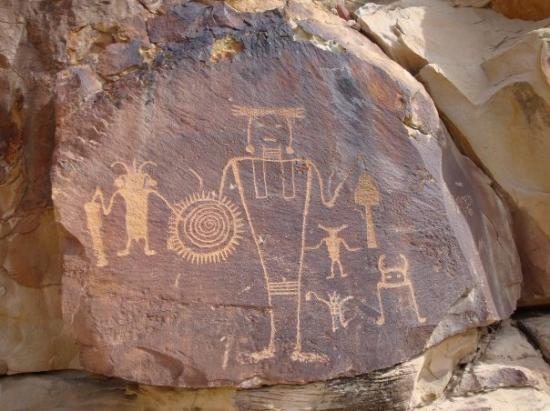
Though Dinosaur National Monument stretches from Colorado to Utah, the most impressive dinosaur bones and fossil sites can be found on the Utah side. The Quarry Exhibit Hall, which features a fascinating 80-foot mural outlining the history of dinosaurs, displays more than 1500 dinosaur bones, some of which are as old as 149 million years. Highlights include the Camarasaurus, the Diplodocus, and the Stegosaurus. Those wanting to experience fossils in their natural habitat will love the site’s Fossil Discovery Center, a 1.2-mile path featuring the exposed fossils of more than 10 species of dinosaur, plus fossilized squid, fish scales, and some remains of an Ichthyosaur, a dinosaur dolphin!
Dinosaur Ridge
Morrison, Colorado
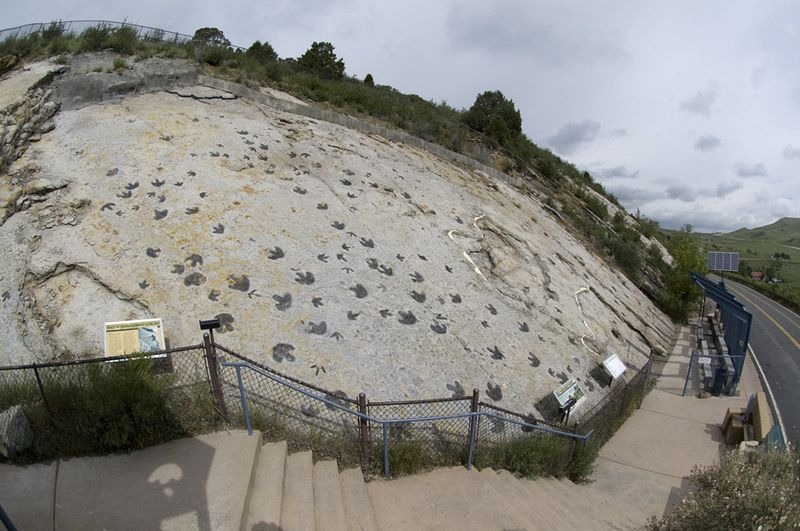
It’s been 80 years since construction workers accidentally uncovered Dinosaur Ridge, one of the largest collection of dinosaur tracks and bones in the world. Today, the “Ridge,” which is geologically part of the Dakota Hogback, consists of hundreds of footprints immortalized in a massive slab of rock. Over the years, some of the world’s most famous dinosaur fossils have been found here, including an Apatosaurus, a Diplodocus, a Stegosaurus, and an Allosaurus. Visitors to Dinosaur Ridge can see these dino skeletons on display in the Dinosaur Ridge Exhibit Hall, along with interesting signage detailing local geology, a volcanic ash bed, nearby trace fossils, and other paleontological and geological features.
Dinosaur State Park
Rocky Hill, Connecticut
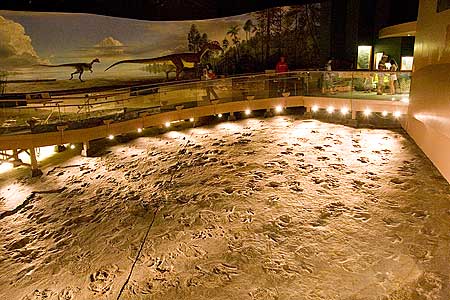
Nearly 50 years ago, dinosaur tracks were found near Rocky Hill, Connecticut, and Dinosaur State Park was founded to protect them. Located in the Connecticut River Valley, the site is both a park and arboretum, the centerpiece of which is the geodesic dome that protects the 200 million-year old footprints that were made during the Jurassic Era. Besides the footprints, the park includes an interesting museum, good interactive exhibits, and miles of beautiful hiking trails.
Dinosaur Valley State Park
Glen Rose, Texas
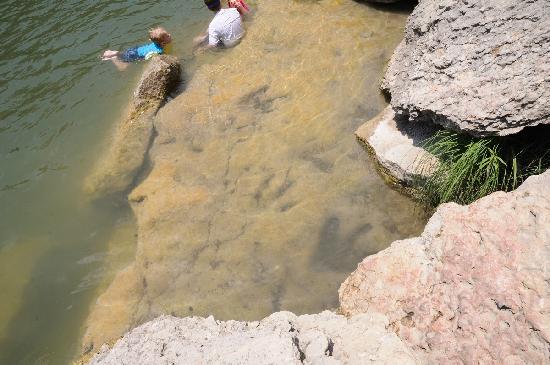
Located 80 miles southwest of Dallas is Dinosaur Valley State Park, one of the most impressive fossil sites in North America. The park’s main attraction is the bed of the Paluxy River, where big dinosaur footprints — perhaps the most famous in the world — can be clearly seen. The park is open for people interested in viewing the prints, and even hosts clean-out days to get the public to help protect these one-of-a-kind prints.
Florissant Fossil Beds
Florissant, Colorado
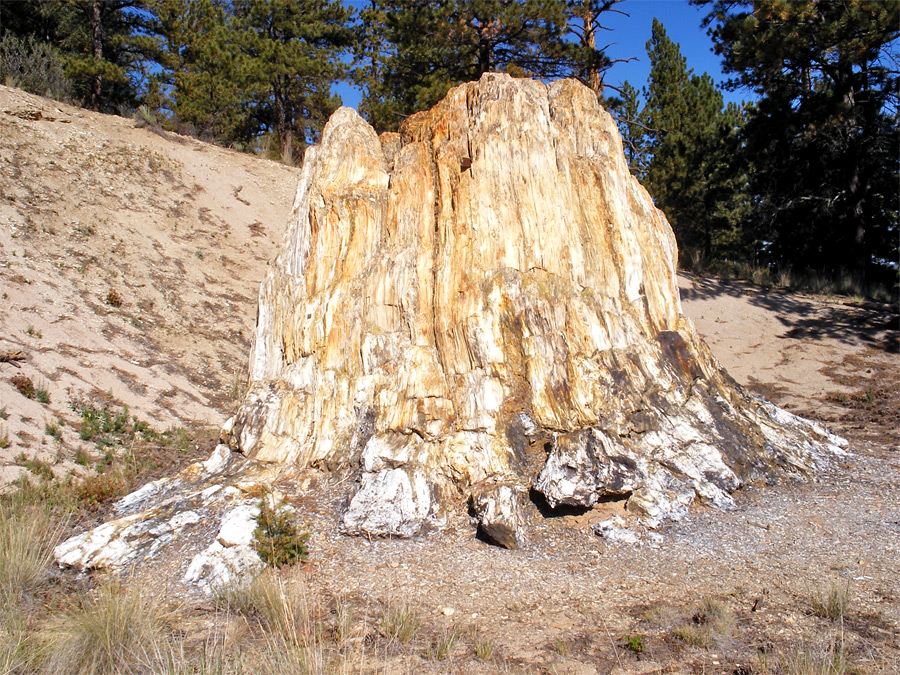
Colorado is well-known for having some of the most diverse fossil sites in the world, and the Florissant Fossil Beds prove no exception! More than 1700 species have been discovered here in the last century and a half, most of which are from the Cenozoic Era. Perhaps the most impressive local discovery has been that of the Brontothere, a rhinoceros-like animal, followed closely by the discovery of the first fossilized butterfly ever to be found in North America.
Fossil Butte National Monument
Kemmerer, Wyoming
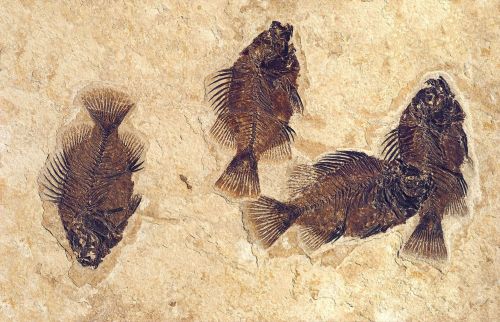
Nicknamed “America’s Aquarium in Stone,” Fossil Butte National Monument is home to some of the best-preserved fossils of their kind. More than 50 million years ago, in what is now called the Green River Formation, millions of fish, plants, and insects were buried under volcanic ash and have slowly fossilized for visitors to see today. The best examples can be found on the Historic Quarry Trail, while those with less time can visit the well-organized museum. Collecting isn’t allowed at Fossil Butte, but there are plenty of nearby private sites that allow interested visitors to dig or purchase their own specimens.
Ghost Ranch’s Museum of Paleontology
Abiquiu, New Mexico
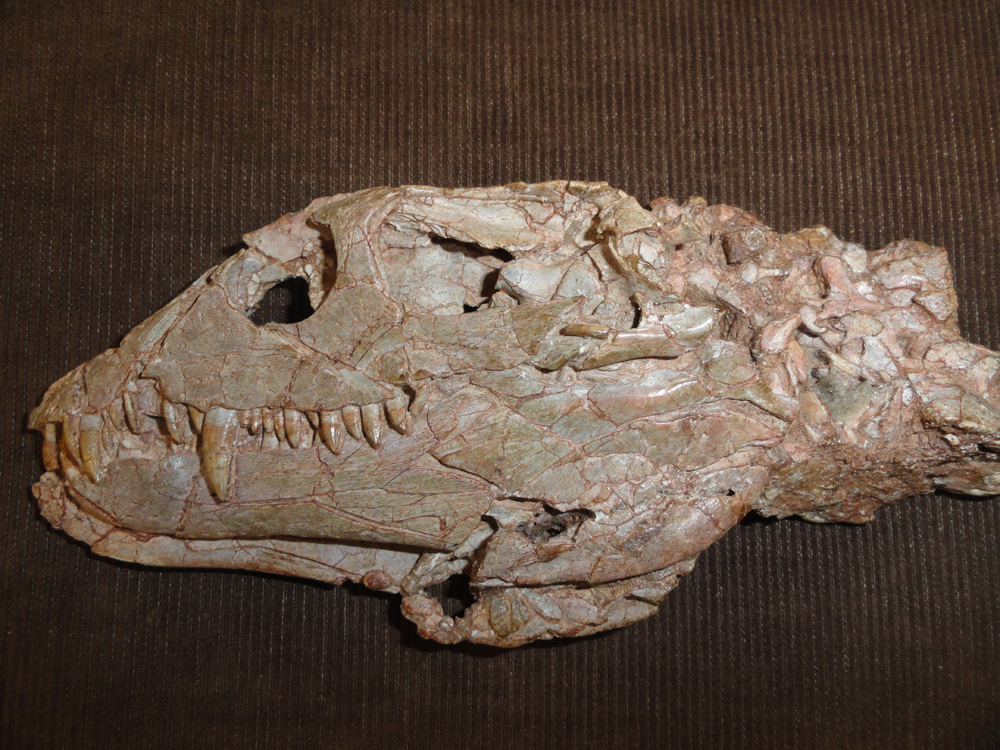
Ghost Ranch’s Museum of Paleontology in New Mexico is situated in and around the Ceolophysis Quarry, where red bedrocks have preserved fossils of more than 1,000 rare and prehistoric species. Some of site’s best finds have included the 6-foot long Tawa hallae (a therapod dinosaur from the Late Triassic Period), the Vancleavea (an underwater reptile), and the fast-moving Ceolophysis (a 2-legged carnivore that lived about 200 million years ago).
Glen Canyon Recreation Area
Lake Powell, Utah
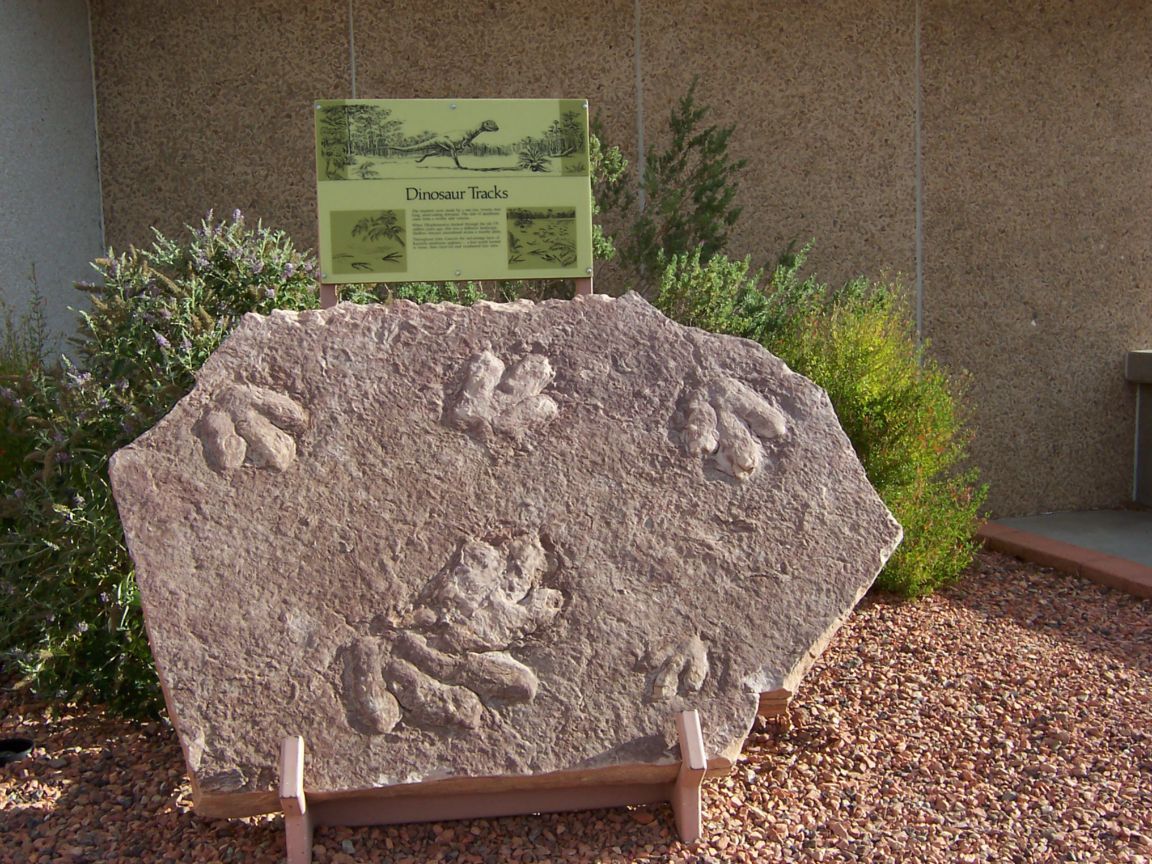
Nestled into the Colorado Plateau, the Glen Canyon Recreation Area has been called a “treasure trove” of Mesozoic fossils. The area exists, first and foremost, for outdoor fun, and popular activities include hiking, biking, boating, camping, and just about anything else you can think of to enjoy the beautiful Colorado scenery. But while you’re having fun, keep an eye out for what have proven to be some of the best preserved dinosaur footprints in the world.
Grand Staircase-Escalante National Monument
Kanab, Utah
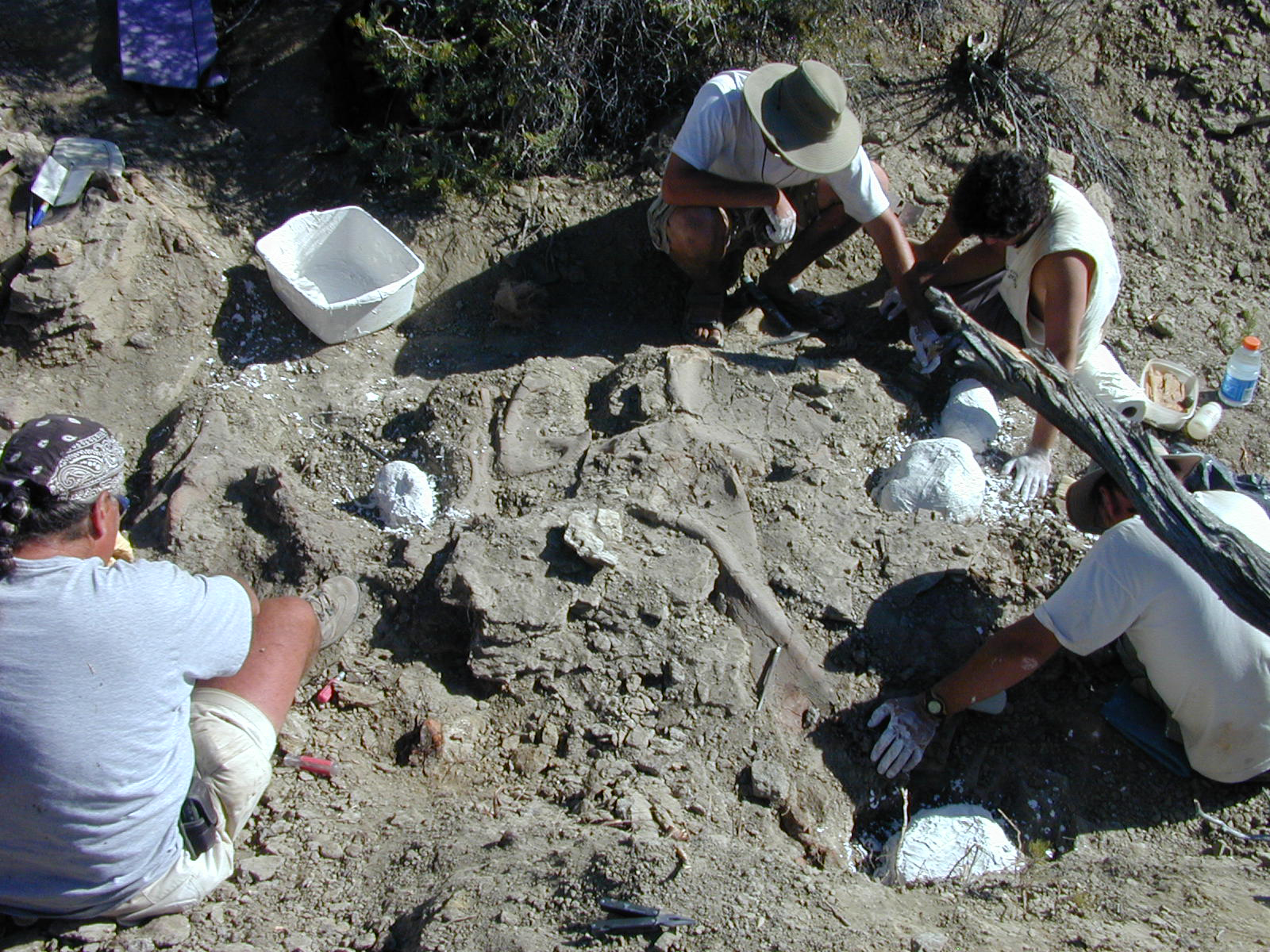
Two hundred million years’ worth of fossils exist in the Grand Staircase-Escalante National Monument that spans areas of both Arizona and Utah. Some of the most impressive fossils here were found on the Arizona side of the park, in the Vermillion Cliffs where the oldest layers of this former freshwater lake contain traces of early fish and dinosaurs. Other fossil-filled areas include the White Cliffs, the Gray Cliffs, and the Pink Cliffs, where Jurassic-era fossils, sea shells, and shark teeth have all been discovered.
Guadalupe Mountains National Park
Salt Flat, Texas
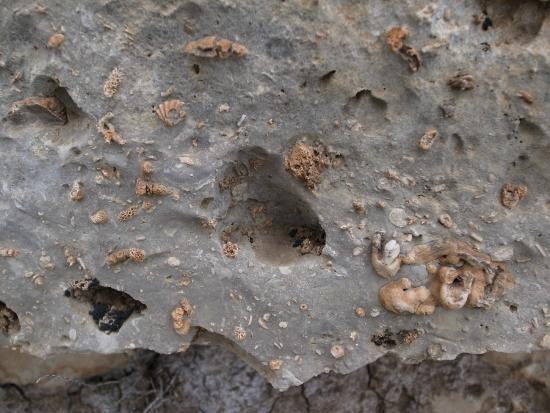
One of the world’s best examples of an ancient marine reef can be found at Guadalupe Mountains National Park in Texas. Indeed, some 265 million years ago, during the Permian period, this area was a sea with a 400-mile long reef. Today, tons and tons of fossils are still being found here, from ancient algae to prehistoric gastropods (our snails’ earliest relatives).
Hadrosaurus Foulkii Leidy Site
Haddonfield, New Jersey
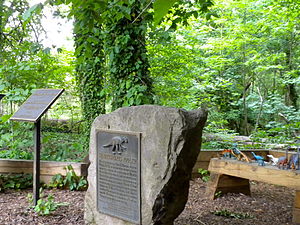
Head to Hadrosaurus Park in downtown Haddonfield, New Jersey, and you can see the site where one of the most complete sets of dinosaur bones ever found was discovered. In 1838, William Parker Foulke excavated 35 of an estimated 80 bones of a then unknown dinosaur, and named his find the Hadrosaurus foulkii. The incredible site was practically forgotten until a century and a half later, when a Boy Scout researched Foulke’s find and promoted it. Today, Hadrosaurus foulkii (a 2.5 ton herbivore which lived during the Cretaceous Period) is the state dinosaur of New Jersey.
Hell Creek Beds
Montana, North Dakota, South Dakota, Wyoming
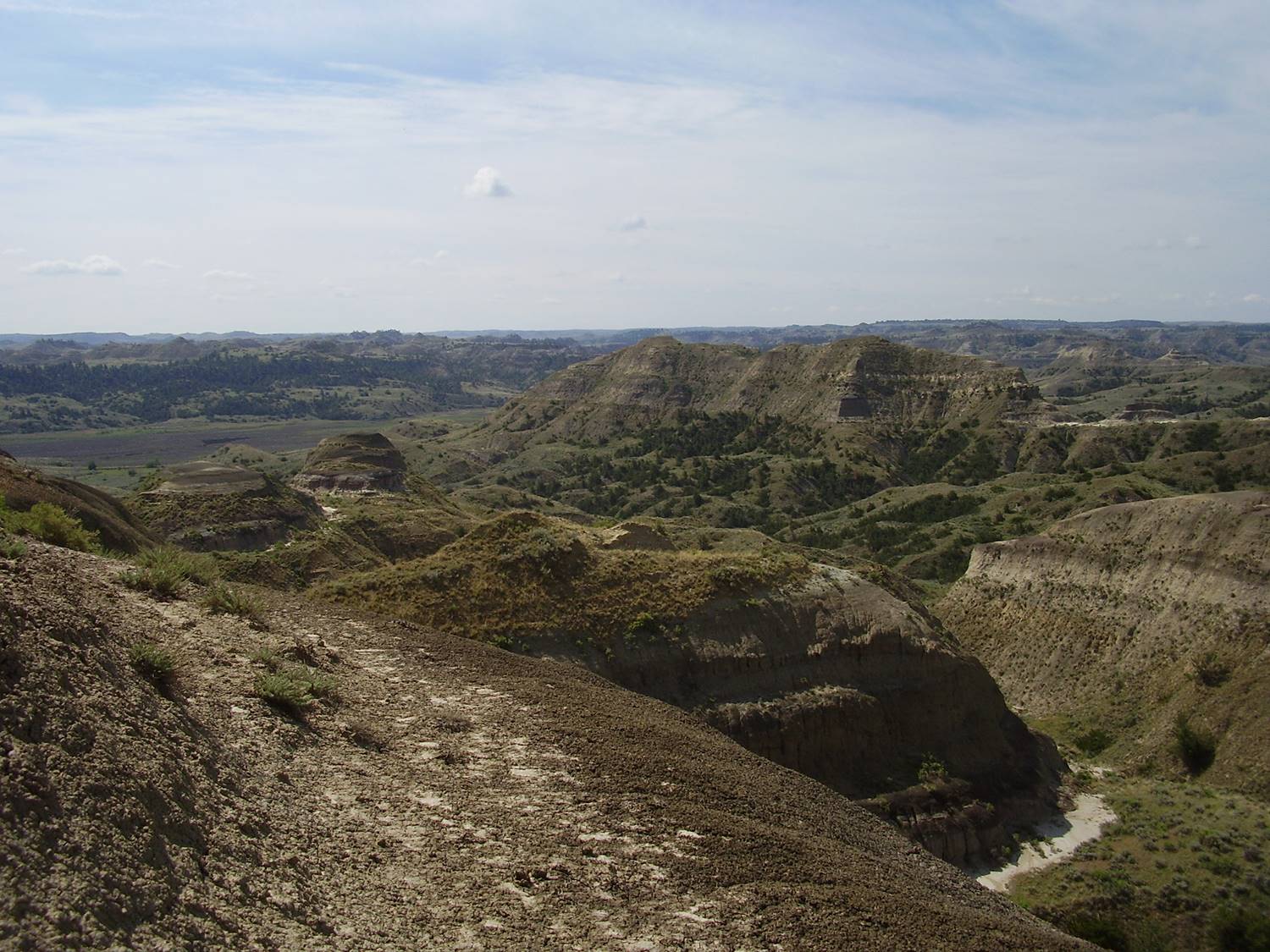
Hell Creek Beds is a rock bed formation that spans four states: Montana (where most of the good stuff is), North Dakota, South Dakota, and Wyoming. Most of the site’s fossils are from the Cretaceous period, about 65-70 million years ago. Common fossil finds have included the horned Ceratopsians, duck-billed Hadrosaurs, and Therapods, lizard-like carnivorous dinosaurs. Serious fossil fans can even dig for fossils themselves under the guidance of an experienced paleontologist on a guided tour. Interestingly, Hell Creek Beds is a unique site in the world, as its rocks contain traces of the chemical iridium, a presence that supports the theory that a meteor caused the extinction of dinosaurs.
John Day Fossil Beds
Wheeler and Grant Counties, Oregon
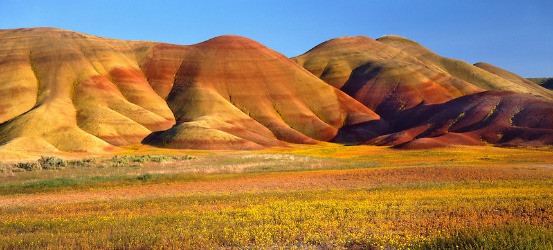
Oregon’s John Day Fossil Beds are best known for the thousands of Cenozoic Era (44 million to 7 million years ago) fossils that have been discovered there. The site actually consists of seven separate collections. The oldest of these, the Clarno Assemblage, dates back to a time when Oregon was a humid, semitropical area. Significant finds from this collection have included 10-foot long crocodiles and creodonts, a meat-eating, hyena-like animal. Another collection, the Rattlesnake Assemblage, has been a major discovery site for saber-tooth cats. Visitors to the Fossil Beds can get a good view of the site’s significance by visiting the Thomas Condon Paleontology Center, which contains some 40 thousand of the area’s most impressive fossil finds.
Kootenay National Park
British Columbia, Canada
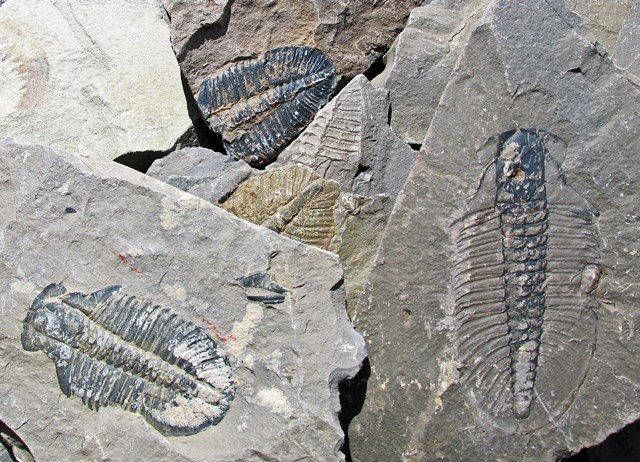
Kootenay National Park, a World Heritage Site, is another impressive fossil site located in the Canadian Rockies of British Columbia. The park’s exposed sedimentary rock is chock-full of Cambrian Era strata that have proven to be very interesting to scientists interested in explosive radiation of multicellular life. Some of these scientists’ more impressive discoveries include a shale-preserved phyllopod bed and a new collection of basal arthropods, plus more than 50 new species.
La Brea Tar Pits
Los Angeles, California
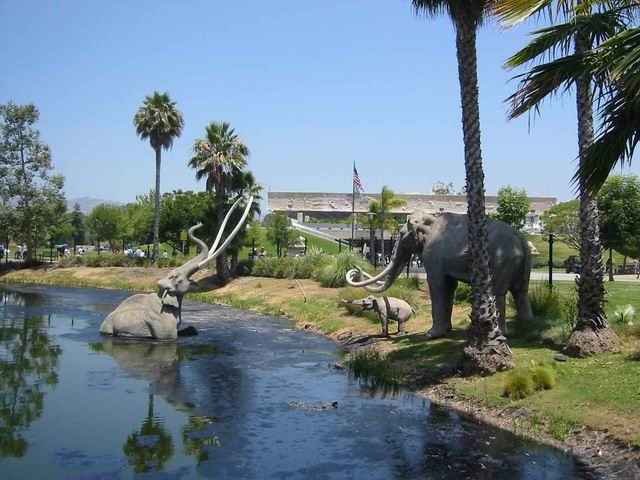
Bubbling tar pits is a black abyss where hundreds of prehistoric animals met their fate. No, it’s not a movie set, but the La Brea Tar Pits! Located just off Wilshire Boulevard, amidst the hustle and bustle of Los Angeles, the La Brea Tar Pits is a great place for those wanting to learn more about the excavation process and the area’s earliest inhabitants. The pits themselves, from which animals like sabertooth cats and wolves have been pulled for decades now, are still the centerpiece of this attraction. The Page Museum displays lots of fossils and several full replicas of the extinct Smilodon (sabertooth cat), while the Fossil Lab allows visitors to see for themselves just how fossils are cleaned and prepared for viewing.
Lilydale Regional Park
St. Paul, Minnesota
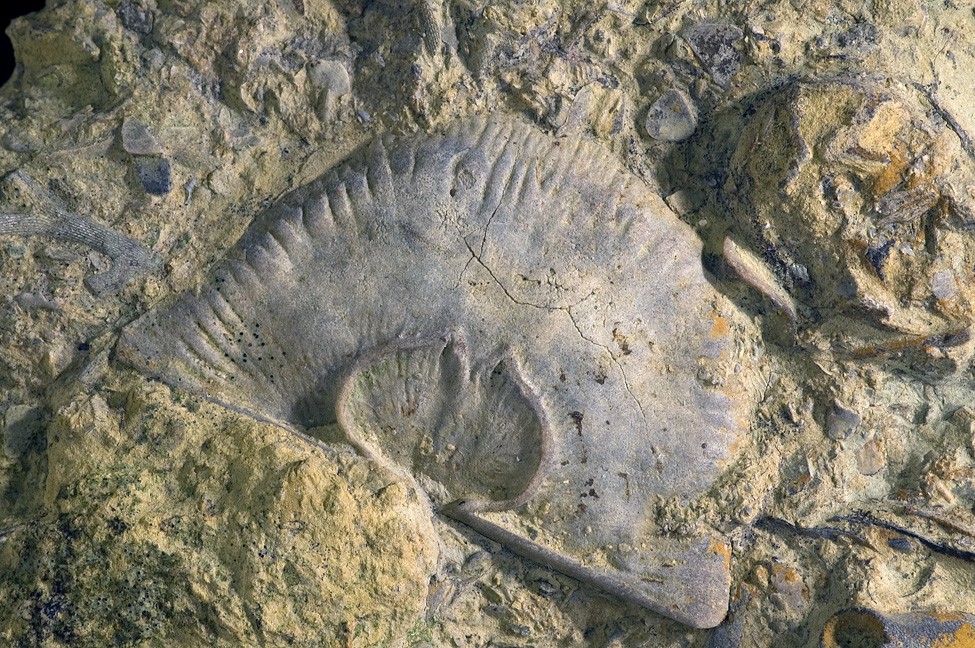
Located just outside of St. Paul, Minnesota, Lilydale Regional Park is best known for its fossils dating from the Cambrian and Ordovician periods, two periods of the Paleozoic Era. The 636-acre park is most commonly used for things like baseball and softball games, boating, picnicking, and birdwatching, but this former Mississippi River floodplain also includes an area where a number of fossils and interesting specimens tend to be found. Visitors interested in going for a dig can apply for a permit from the local Parks and Recreation Department.
Mammoth Site
Hot Springs, South Dakota
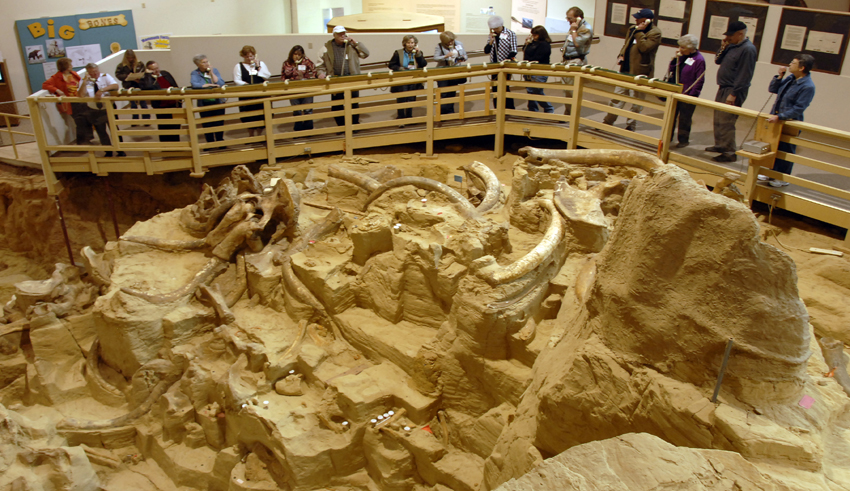
Mammoths went extinct only a few thousands years ago — a blink of an eye compared to dinosaurs. Though traces of mammoths have been found all over North America, the largest concentration of complete mammoth skeletons in the world can be found at the Mammoth Site in Hot Springs, South Dakota. The site is a former sinkhole where archaeologists have found dozens of mammoth bones.
Montour Fossil Pit
Danville, Pennsylvania
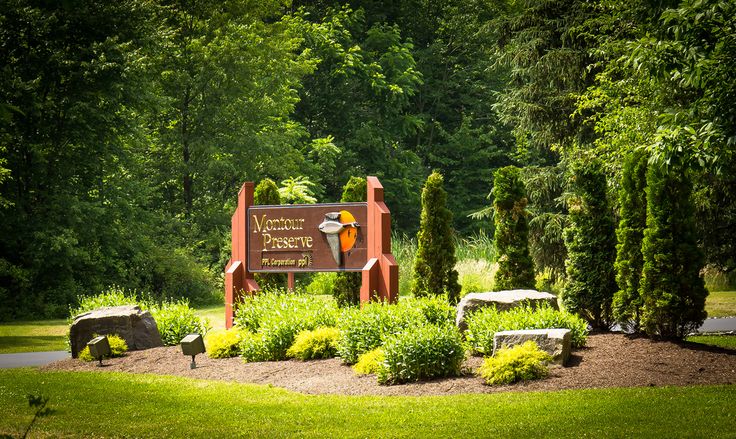
Pennsylvania’s Montour Fossil Pit is both a preserve and an active excavation site. Located about 230 miles northeast of Pittsburgh, the fossil pit welcomes visitors who want to play paleontologist for the day, and the site is a popular destination for local school field trips. Common finds at Montour include trilobites (related to modern horseshoe crabs), pelecypods (early ancestors of clams, mussels, and oysters), and gastropods.
Nash Dinosaur Track Site and Rock Shop
Hadley, Massachusetts
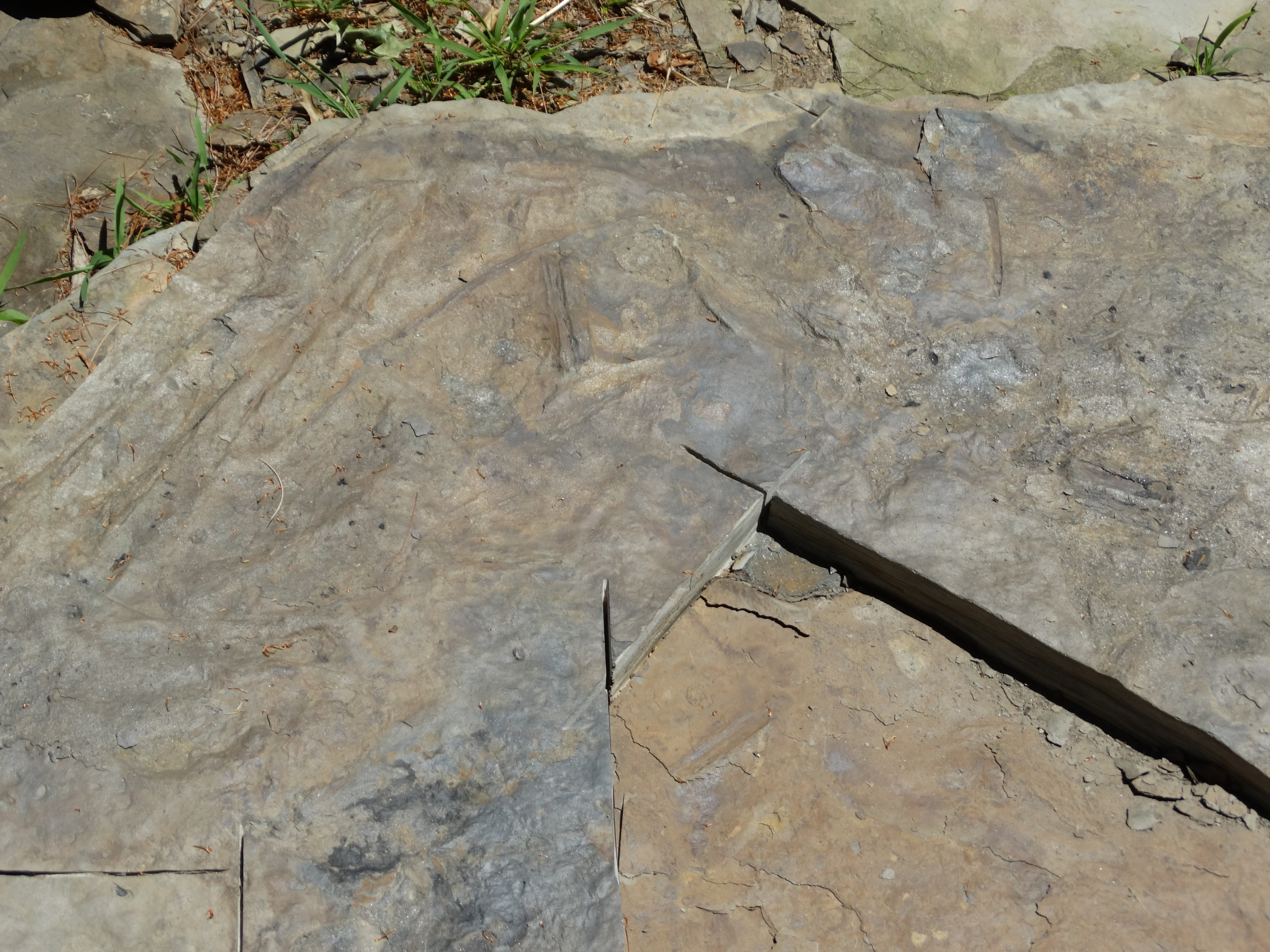
It was on the site, now known as the Nash Dinosaur Track Site, that the first dinosaur footprints in the Connecticut River Valley were found in 1802. Even more tracks were discovered a century later, in 1933. Today, the Track Site is one of the oldest and most successful of its kind in the nation. An on-site museum displays a variety of tracks and fossils that have been found in this region over the last two centuries. Visitors are even able to take home their own fossils and casted tracks by visiting the rock shop.
Page-Ladson Prehistory Site
Big Bend region, Florida
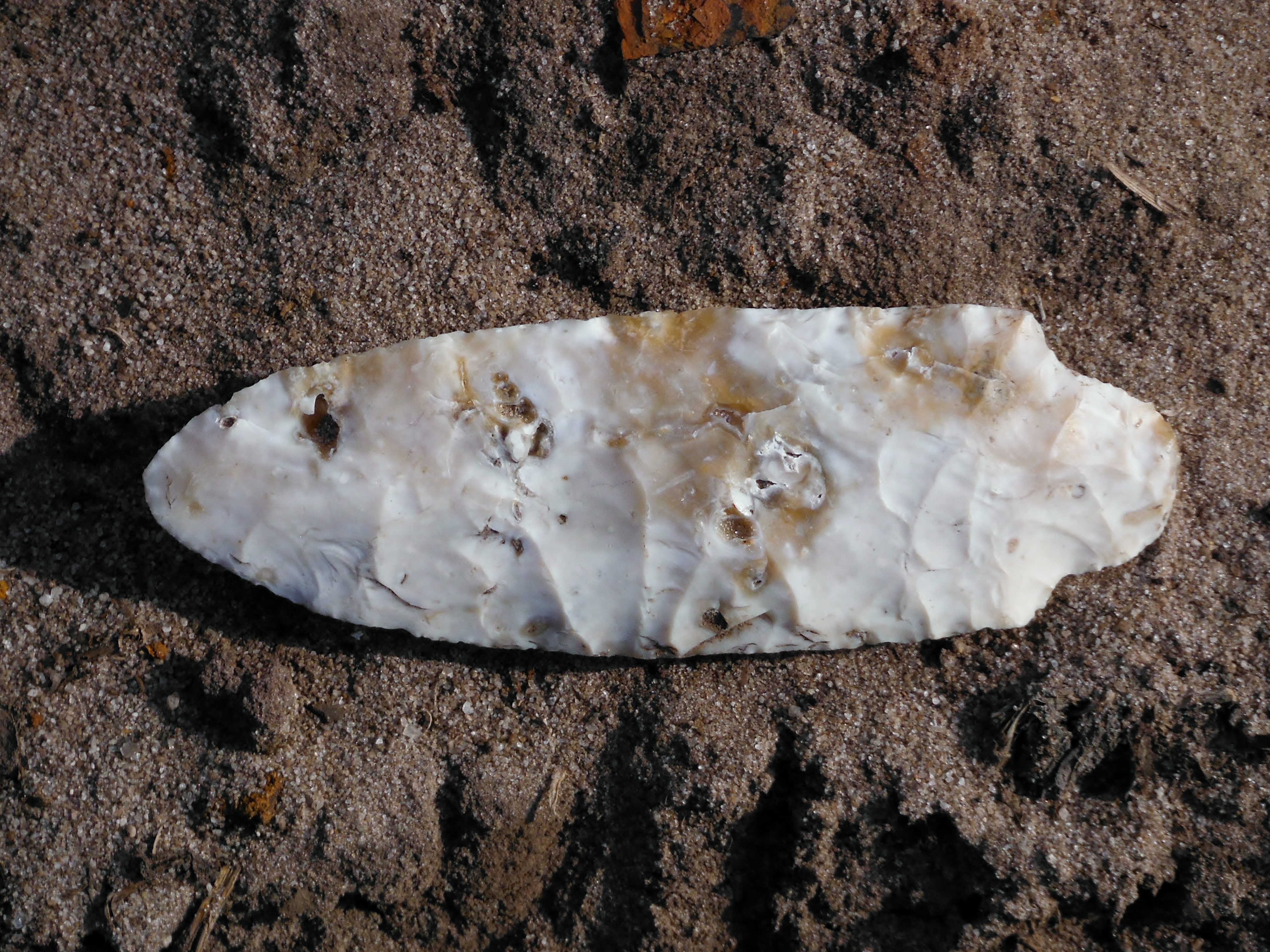
Florida’s Aucilla River is what scientists call “karstic” — that is, it has a limestone underlay that has eroded overtime and created a sinkhole. A number of stratified deposits and fossils have been found here, each of which has been dated to about 15,000 years before the present era. Most of the objects and fossils found seem to belong to the North American continent’s earliest humans and the local animal populations, including mastodons, they decimated.
Peace River
Arcadia, Florida
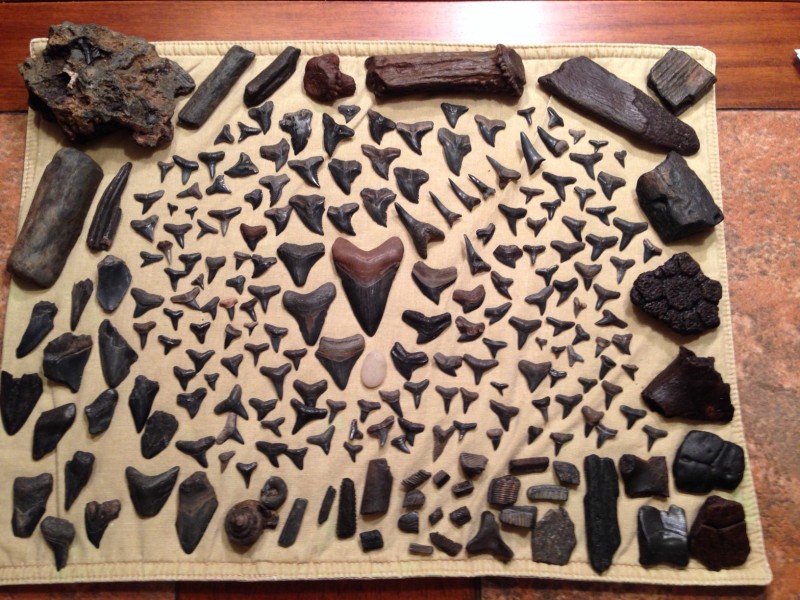
At Florida’s Peace River, amateur fossil hunters are in for a one-of-a-kind experience. A number of fossil expedition areas operate in the area, taking full advantage of the myriad bones and teeth of animals like ancient mammoths, mastodons, camels, sloths, horses, tortoises, jaguars, saber-tooth cats, capybaras, armadillos, whales, dolphins, and sharks that once called this unique area home. For the best luck, head to Peace River in the Spring, when waters are nearly a foot lower than the rest of the year.
Petrified Forest National Park
Navajo and Apache Counties, Arizona
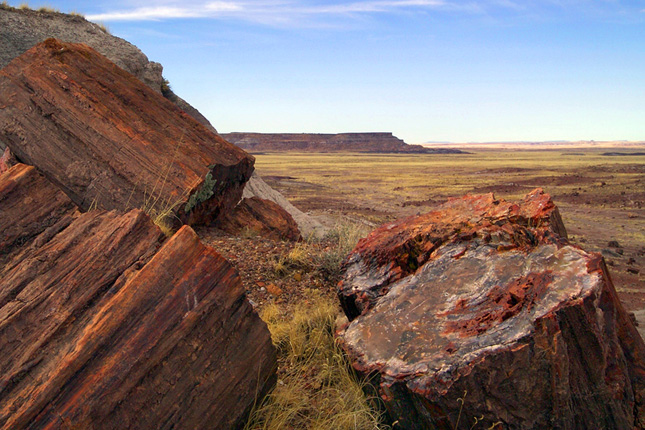
Petrified Forest National Park is one of the best known fossil sites for, you guessed it, fossilized wood. Located in the Navajo and Apache counties of Arizona, the 230-square mile park attracts around 645,000 visitors each year for sightseeing, photography, hiking, and backpacking. While the park is most famous for its collection of 225 million year old fallen trees, eggs and bones from all kinds of “strange and interesting” dinosaurs have also been found here. The park’s Rainbow Forest museum consists of a number of interesting displays that include skeletons, Indian carvings, and recreations of desert scenes.
Red Gulch Dinosaur Tracksite
Greybull, Wyoming
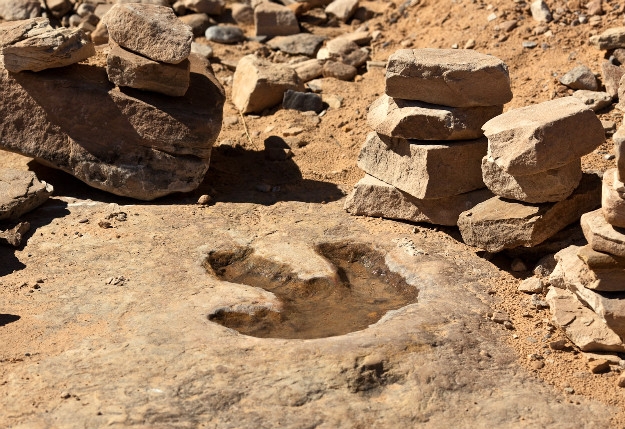
Red Gulch Dinosaur Tracksite in Wyoming is one of the best fossil sites in North America. Easy walkways are well set up to take visitors past roped-off excavation areas and well-preserved dinosaur footprints. The staff, which includes paleontologists, are very helpful and more than willing to help visitors identify tracks. Visitors to the Tracksite are allowed to collect fossils on most days (though you’ll have to get a permit to dig like the pros), and common fossil finds include Trilobites, Brachiopods (shell creatures), and various invertebrates.
Two Medicine Dinosaur Center
Bynum, Montana
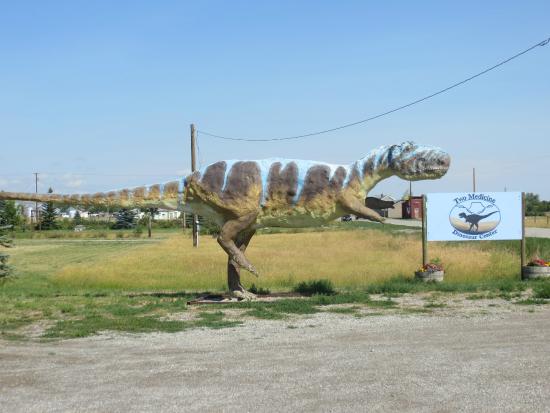
For those wanting to play paleontologist for a day or two, there may be no better spot than Two Medicine Dinosaur Center near Bynum, Montana. In addition to a small museum gallery which highlights local geology through exhibits such as an incredible 137-feet long Seismosaurus, the Center hosts digs in which visitors can participate. The Big Sky State has proven itself to be one of the best spots on the continent for finding dinosaur bones, and big finds at Two Medicine Dinosaur Center have included duck-billed dinosaurs, Tyrannosaurus, and Albertosaurus.

